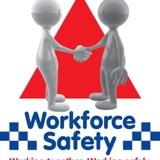Title Page
-
Customer Name
-
Address
-
Member Number
-
Conducted on
-
Conducted by
-
Next Estimated Planned Review Date (in the future)
Introduction
-
The Health & Safety at Work Act 1974 imposes a statutory duty on employers to ensure, so far as is reasonably practicable, the health, safety and welfare at work of all their employees. This duty also extends to others who be affected by the employers’ undertakings (work activity) e.g. contractors, tenants, neighbors visitors and members of the public.
Employees also have a statutory duty under the Act to take reasonable care for the health and safety of themselves and of the others who may be affected by their acts or omissions at work and cooperate with employer in fulfilling his duties.
The initial requirement of the Management of Health & Safety at Work Reg. 1992 is that employers assess the risk to the health and safety of the employees and to anyone else who may be affected by the work activity, so that the necessary preventative and protective steps can be identified.
It also requires the employers to make arrangements for putting into practice the health and safety measures that follow from the risk assessment (planning, organisation, control, monitoring and review) in other words, the management of H & S.
In undertaking this audit, I have considered the requirements of the legislation as administered in Health, Safety and Welfare at Work Act.
The assessments, observations and recommendations reflect conditions observed on site at the time of the audit implementation and will be reviewed every 6 months or annually ever after.
OBJECTIVES
To identify hazards that can be removed or reduced and the risks that remains.
To identify existing generic and fire precautions, evaluate and recommend additional and suitable accident and/or fire prevention control measures to protect people against them.
The main purpose is protecting the lives and the health of people in the workplace in case of an accident, and -where possible - to reduce the damage to property and assets.
SUMMARIES
EXECUTIVE SUMMARY
Management are urged to review their current health and safety management system as a matter of urgency.
Recommendations have been made in this report to ensure statutory compliance by reducing risks to health and safety, as far as is reasonably practicable. That is at a reasonably cost having regard to the magnitude of risk.
The consequences to this company, its directors and employees of taking no action could be dire.
In the event were the activities will be suspended, closure or legal prosecutions leading to substantial fines, the company will be unable to insure against criminal action.
SUMMARY OF HAZARDS
Definitions:
Hazard: - something with potential to cause harm.
Risk: - the likelihood that harm from a particular hazard is realised.
Risk Assessment: - the evaluation of the likelihood that a hazard will cause harm which identifies and takes account of all significant factors, affecting the risk, and which in conclusion advises if/how the management of such risks to be improved to eliminate or lessen the chance of harm.
OBSERVATIONS
HEALTH & SAFETY PRECAUTIONS
One of the primary aims of the current and pending H & S Legislation is to ensure that a proactive approach to the prevention of accidents is adopted.
The proactive measures fall into the following categories.
a) Identify hazards and assess risks: The audit carried out on as dated and the contents of this report mean that you have now complied with this requirement.
b) Formulate and implement control measures to minimise risks: Procedures covering the areas detailed within this report, must be set down in a comprehensive safety manual.
c) Inform, instruct and train personnel: On site personnel must be trained in how to apply the procedures set out within the safety manual.
d) Monitor conditions to ensure that the control measures are being correctly implemented: Having implemented the recommendations contained within this report the premises should be reassessed in order that a Certificate of Compliance can be issued. Following which an annual reassessment should be undertaken to ensure that adequate control is being maintained.
In addition should the circumstances change significantly a reassessment would be required.
The section 3.2.of this report details the hazards, which were identified during the audit together with an assessment of the risk that these hazards present.
This section gives details of other statutory non-compliances, which, although they are statutory requirements, do not necessary present risk to the health and safety of the occupants and visitors of the building. However by virtue that they are statutory requirements, failure to comply could result in prosecution.
RISK ASSESSMENTS REPORT
General Risk Assessment:
The general Risk Assessment may well fulfil all your legal requirements; however, it is based on the access permitted and the information supplied to us at the time of the assessment. As the responsible person, you should determine if all the relevant locations, processes, personnel, etc. have been identified and are, therefore, covered by this General Risk Assessment.
Although Reg. 6 of the Management of H & S at Work Reg. 1992 allows for the appointing by the employer of one or more competent persons to assist him in his undertaking the onus is on the employer to make arrangements for the adequate cooperation, time and means available having regard to the size of the Company, and the risk and distribution of these risks throughout the undertaking.
The primary objective of this section of the report was to undertake risk assessment of hazards which may be present on site.
Each hazard identified has been separately assessed the results of which are detailed, with photographic records where applicable, within this section of the report.
Priority:
Very High (VH): 12 – 16 = Death or Major injury is very likely.
Immediate action is required.
High (H): 8 - 9 = Foreseeable Serious Legal Consequences.
Requires urgent action
Medium (M): 3 - 6 = Areas of concern. Remedial action required ASAP.
Low (L): 1- 2 = Good Practice. Action might require in due course.
Who might be harmed? Employees, customers, visitors, contractors, building and environment
Priorities Explained
IMMEDIATE ACTION (VH):
These matters will require immediate action in order to alleviate imminent danger that could lead to major injury, even death of employees or others. The hazard identified will certainly be the result of a statutory contravention and would lead to action from the enforcing authorities whether this is legal proceeding, a prohibition notice or an improvement notice
URGENT ACTION (H):
These matters will require urgent action in order to alleviate imminent risk to health, safety and welfare of employees or others. The hazard identified will almost certainly be the result of a statutory contravention and could lead to action from the enforcing authorities whether this is legal proceeding, a prohibition notice or an improvement notice
ACTION AS SOON AS POSSIBLE (M):
These matters will require prompt action in order to alleviate the risk, which may be serious in outcome, but not creating and imminent danger. The hazard identified will probably be the result of a statutory contravention or a deviation from the approved guidance such as approved codes of practice or HSE guidelines. These matters could lead to action from enforcing authorities, although it is likely that an improvement notice would be the strongest penalty.
ACTION IN DUE COURSE (L):
These matters should be addressed in due course in order to minimise the risks to the health, safety and welfare of employees and others. These hazards may not require immediate attention either due to the low risk of damage/ill health or due to proposed changes of legislation or implementation periods as stated in the relevant legislation. These matters are unlikely to result in prosecution or legal proceedings. Although an imminent risk is not evident the desired improvements and precautions should programmed into a risk management programme.
-
Walk Around General Risk Safety Checklist – To be completed on each visit and saved in ZIP File
Policy and Statutory Notices
-
Is there a copy of the Company’s Health & Safety employee policy available for all employees?
-
Is the current Health & Safety Policy Statements displayed and signed?
-
Is Company’s current Employers Liability Insurance Certificate in date and available?
-
Is there a properly completed HSE Health & Safety Law poster (new version) on display?
-
Are the relevant and associated safety posters & signs displayed? Such as: Isocyanates, COSHH, Manual Handling, First Aid in Cases of Electric Shock, First Aid at Work, Dermatitis, PPE, RPE, Fragile Roof, Flammables Stored, No Smoking, No Food/Drink, High Voltage, EX Zones, Hearing Protection etc?
-
Is Health and Safety Induction (HSI) training carried out for new employees, including temporary and agency employees?
-
Are Tool-Box Talks carried out and documented periodically?
Display Screen Equipment (DSE)
-
Have DSE Workstation Assessments been undertaken for all habitual users and recorded?
-
Are eyesight tests provided on request and corrective appliances supplied for DSE work as recommended by the optician?
Risk Assessment (General)
-
Is there a comprehensive risk assessment programme in place covering all work locations and work activities?
-
Are risk assessments carried out as necessary (example: New & Expectant mothers, Young Persons, Lone Worker)
-
Have risk assessors received appropriate training?
-
Is there evidence that risk assessments and control measures identified are being reviewed and implemented?
-
Where applicable, has a full Hand-Arm Vibration risk assessment been carried out in order to prevent Hand-Arm Vibration Syndrome (HAVS) - aka Vibration White Finger (VWF)?
Manual Handling
-
Have significant manual handling tasks been identified and risk assessments undertaken? (Provide examples)
-
Has action been taken to remove or reduce manual handling risks as required?
-
Where mechanical aids cannot be used has relevant training and information been provided?
Control of Substances Hazardous to Health (COSHH)
-
Have COSHH risk assessments been undertaken that fit the purpose of the business and are current and reflective of the site?
-
Is there a hazardous substance listing in place that identifies all hazardous substances available for use at this location (including those used by contractors)
-
Are the Material Safety Data Sheets (MSDS) available for all hazardous substances stored
-
Has the statutory inspection of Local Inspection Ventilation (LEV) to HSG258 (3rd edition 2017) been undertaken at regular intervals by a qualified engineer? Booths, mixing rooms, fume/weld/dust extraction etc.
-
Has the exposure to Diesel Engine Exhaust Emissions (DEEE) been assessed, controlled and monitored? (Exhaust Extraction)
-
Are all hazardous substances, including waste, suitably labelled and stored safely and securely?
-
Are staff suitably instructed and trained in the use of substances employed and/or generated in/by their work?
-
What controls have been put in place to eliminate or reduce the risks that metal welding (arc and gas) and cutting can present? (Welding and cutting produces a variety of hazards to people and surrounding area, e.g. fire hazard, the handling of compressed fuel and shielding gases, solvents and material handling and a significant hazard from fumes. This could cause potential fatal consequences in both the short and long term).
-
Have the premises been surveyed for the presence of Asbestos Containing Materials (ACMs)? If built pre-2000, this is a requirement under the Control of Asbestos at Work Regulations 2006.
-
Is there a working plan in place to manage ACMs and pass on information to anyone who may disturb them?
First Aid and Accident Reporting
-
Is there a sufficient number of trained first aiders?
-
Is there sufficient first aid signage reflective of the first aiders onsite?
-
Is there sufficient first aid and eye wash supply available, in date and restocked as necessary?
-
Are accident reported correctly, in line with RIDDOR Regulations 2013?
-
Is there an accident book available and suitable completed?
-
Are accidents, near-misses and accident trends investigated and monitored? Provide evidence, if available
Qualified First Aiders
-
Name
-
Certificate expiry
Working Environment and Welfare Arrangements
-
Are reasonable levels of housekeeping and cleanliness in place?
-
Is the condition of floors and stairs safe for easy access and egress?
-
Are there heating facilities that can be safely used during winter/colder months? Are they checked?
-
Where applicable have actions been taken to reduce noise levels to a reasonably low level, so there is no foreseeable risk of hearing damage being incurred by employees?
-
Are the toilets and washing facilities clean, tidy and stocked with soap, barrier cream and aftercare cream dispensed?
-
Are rest/refreshment facilities provided, clean and bins emptied?
-
Are there safe routes for vehicle traffic and pedestrians
-
Is there an adequate supply of fresh drinking water that is identifiable?
-
In situations where persons might fall 2 metres or more, are there proper safety measures in place? (e.g. safety rails, toe boards and fall arrest system)
-
If a fixed ladder is in use, are they of sound construction with: firm horizontal rungs, styles that extend above the highest levels, and has regular checks?
-
If applicable, are the showroom windows in sound order with distinctive markings on the plate glass windows?
Work Tools, Lifting Equipment and Use of Pressure Systems (Compressed Air)
-
Is the use of potentially dangerous equipment restricted to those who have received appropriate information and training?
-
Are dangerous machinery parts adequately protected?
-
Is all lifting equipment regularly serviced and inspected to comply with PUWER 1998 and LOLER 1998?
-
If trolley jacks are in use, is there evidence available showing that they have been inspected by a competent person at least every 12 months? Are all axle stands found to have the correct pin in place?
-
Is the pressure system regularly maintained/serviced and examined by a competent person?
-
Where applicable, is a formal written scheme of examination for the pressure system in place where the combination of the internal volume and pressure of the vessel exceeds 250 bar litre? Is the Safe Working Pressure clearly visible on all relevant equipment?
-
Are the “Safe Working Load” & “Safe Working Pressure” clearly visible on all relevant equipment?
-
Has all portable gas equipment (gas cutting and welding equipment) undergone thorough checks in accordance with BCGA CP7 and CP47 regulations?
-
Is the oxy/acetylene equipment stored next to the main entrance and warning signs placed outside to alert fire officers?
-
Are correct safety precautions and equipment in place for the removal and replacement of tyres?
-
Is there documented evidence that all relevant equipment has been inspected/maintained/serviced/calibrated at the appropriate intervals?
-
Is there a system for reporting equipment faults/problems? Give details
-
Has all rectification work identified during inspections been carried out?
Electricity
-
Is an Electrical Installation Condition Report (EICR), which must be carried out by a qualified electrician every 5 years under IEE Regulations, available for inspection?
-
Have Portable Appliance Tests been undertaken for the relevant equipment? Give details
-
Are electrical distribution panels clearly identified (high voltage sign), accessible and kept free of debris?
-
Is the cable management acceptable, the extension leads not overloaded and the reels fully extended when in use?
-
Is the electrical equipment properly signed and identified with signs of an appropriate standard? (i.e. high voltage)
-
Is the circuit provided with RCD protection? Is RCD being tested by tripping the test button?
-
Are staff capable of undertaking a basic visual inspection of the portable electrical appliances they are expected to use?
-
Do electric vehicle (if repaired on site) have a separate risk assessment prepared?
-
If applicable, is the MOT pit fitted with sealed lighting, secure anti-slip stairs and free from debris, water and oil spillage? Is the perimeter marked in bright yellow strip of 10cm width and 30 cm from the edge? Are sections of open pit adequately covered (boards, portable railing with hazard chain) when both in use and not in use to prevent falls?
-
Is the gas installation maintained at all times in a satisfactory condition and regularly inspected by a competent engineer? Is a log book available for inspection on site?
Visitors and Contractors
-
Is there evidence that health and safety is part of the selection/approval process for engaging contractors - H&S questionnaire completed?
-
Are working methods/ safety controls for hazardous activities e.g. confined spaces, work at heights etc. agreed and communicated prior to starting work?
-
Do the premises have an effective system for booking visitors and contractors in and out?
-
Do visitors and contractors receive safety instructions on arrival e.g. fire, first aid, safe working
-
Is the car park in good order? Have bay markings, slips and trips, MOT/customer/disabled parking signage, pedestrian routes been considered?
Personal Protective Equipment (PPE) and Respiratory Protective Equipment (RPE)
-
Is PPE in place and in use on the day of inspection?
-
Where applicable, is the completed PPE form for each member of staff (if applicable) available onsite?
-
Has training in the use and maintenance of PPE been carried out and documented?
EPA and Waste Management
-
Does the company have access to transfer and consignment notes from, as a minimum, the last 3 years? These must be available for inspection on request and stored in Volume 3
-
Have all the Waste Carried Licence companies been checked against the Public Register? Public register available at data.gov.uk
-
Is the oil tank bunded? If not, how close to water drains, groundwater, rivers, streams etc. is it?
-
Is a spillage procedure displayed?
-
Is suitable material being used to clean up spillages?
-
For businesses in Wales whose annual waste is more 500 kg and/or 2x 205 litre barrels, is there a Hazardous Waste Registration certificate in place?
Additional Findings
-
Document additional findings, not documented elsewhere, in the comments section
Signatures
-
Member Signature
-
Auditor Signature
-
Date












